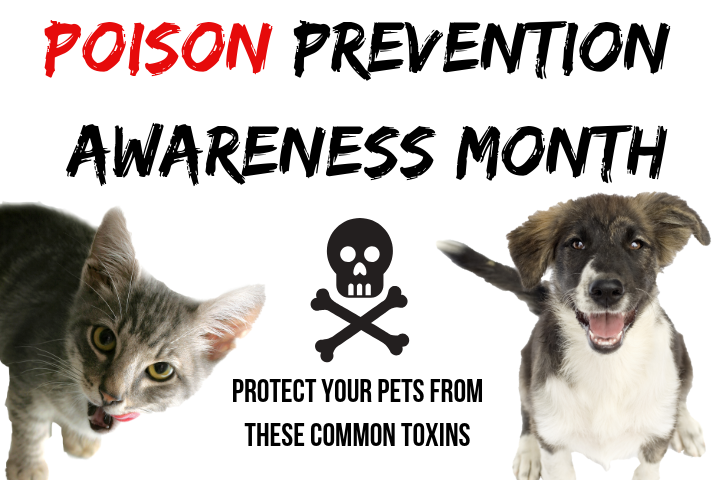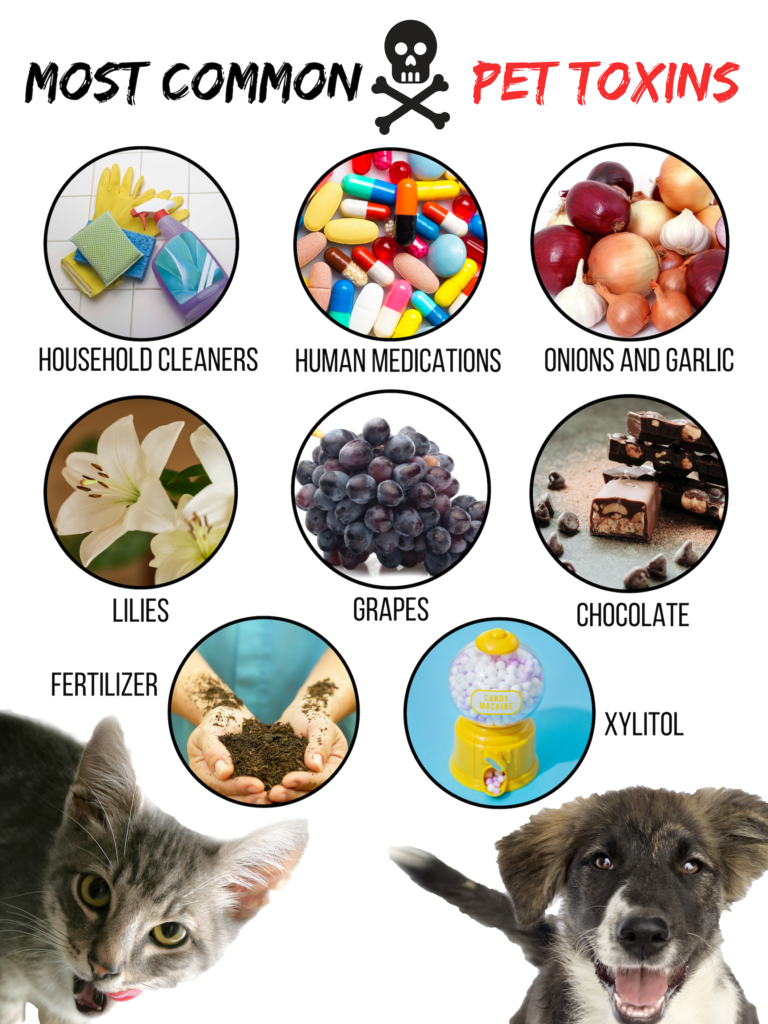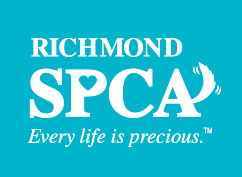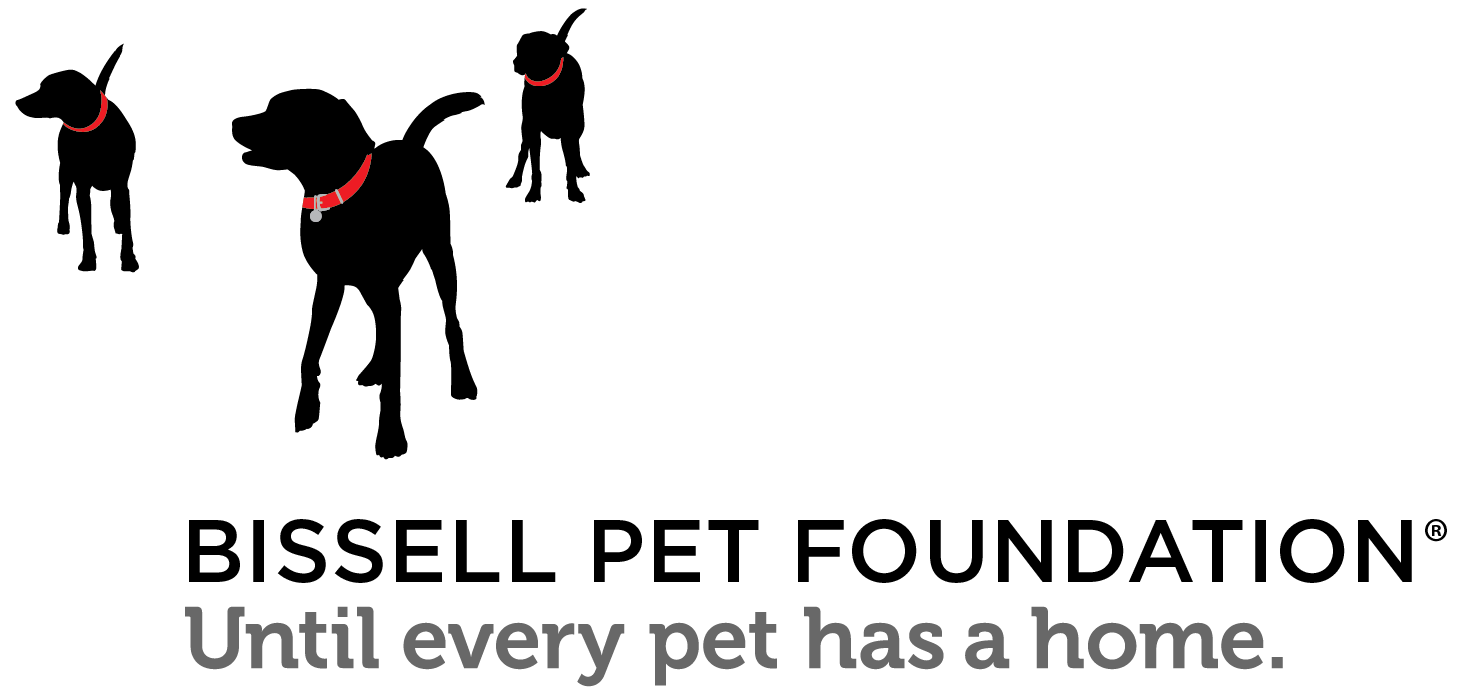Common toxicities in companion animals

Think of the word “poison” – what does this term bring to mind? Does it conjure the image of a skull-and-crossbones label?
Though this may be what many of us visualize, a number of the substances that are hazardous to companion animals are not so easy to spot. Pet guardians should become familiar with common toxicities that can harm cats and dogs, and Poison Prevention Awareness Month is the perfect time to seek resources on this topic.
Below are some of the most common items that present a danger to companion animals, along with corresponding clinical signs. For a comprehensive list of substances that are poisonous to cats and dogs, we recommend visiting the Pet Poison Helpline website.
Chocolate, grapes & raisins
These are three of the more dangerous foods for canines to consume.
Chocolate varies in levels of toxicity, but darker chocolate and baking chocolates are generally more potent than milk chocolates. Chocolate contains two substances that prove problematic for canines – theobromine and caffeine. These ingredients are known to cause an increased and erratic heart rate, which can lead to a host of problems. Vomiting, diarrhea, rapid respiratory rate and hyperactivity are a few of the clinical signs that pets with chocolate toxicity may display. Ingestion can even lead to seizures and cardiac failure, so veterinary care should be sought immediately.
Grapes and raisins are attributed to kidney failure and related fatalities in dogs, even in small amounts. The exact ingredient that causes these foods to fall into the “poison” category is still unknown, so ingestion of any amount is considered dangerous. Induction of vomiting and administration of fluids are two of the treatments your veterinarian may recommend in response to raisin or grape ingestion. Symptoms – which include lethargy, inappetence and urinary abnormalities – may take several days to become apparent, so contacting a veterinarian immediately if you suspect a grape or raisin toxicity is advised.
Onions and garlic
Onions and garlic pose a serious risk to cats and dogs if consumed. Both foods are members of the Allium family, and both are known to cause anemia in companion animals. These foods act by causing damage and destruction to red blood cells, leading to anemia. Signs of anemia may vary from pet to pet and the onset is not immediate. Some clinical signs take several days to appear, and include pale gums and membranes, as well as lethargy or listlessness. As with each of the items on this list, it is recommended that pet guardians contact a veterinarian if ingestion is suspected.
Xylitol
Xylitol is a natural sweetening ingredient that is harmful to dogs if eaten. Most people are aware that xylitol is present in a variety of gum brands, but there are other items containing this sweetener than are lesser known. It can be found in some toothpastes and mouthwashes, sugar-free candies and mints, certain juices and fruit-flavored drinks, and even in many brands of peanut butter.
When ingested, xylitol actually lowers blood sugar levels in canines to dangerous levels. The result can be hypoglycemia, which can lead to seizures, organ failure, and even death. A quick response and initiation of treatment by a veterinarian is crucial to recovery in these cases.

Lilies
Perhaps the most common lily that poses a threat to cats is the Easter lily. Even ingestion of stems, leaves or pollen from one of these plants can cause an onset of kidney failure in one to three days. Common clinical signs of kidney failure due to lily ingestion include but are not limited to vomiting, lethargy, extreme thirst, and excessive or limited urination.
Day and Tiger lilies are also common poisoning culprits, as they are in the same family and are commonly found as household plants. Similar to xylitol ingestion, swift treatment by a veterinarian is essential to recovery. Treatments may include hospitalization with fluid therapy, among other things.
Canine flea/tick prevention in cats
When it comes to flea and tick prevention in companion animals, there is no one-size-fits-all approach. Many topical preventions marketed to canines contain ingredients called pyrethrins or pyrethroids, which are deadly to cats. Guardians who apply canine prevention to feline companions in an effort to save funds may end up with, at best, a large emergency bill.
Pyrethrins and pyrethroids cause disorientation, seizures, and even death in cats who have been treated with these products. When it comes to prevention, canine and feline formulas are metabolized differently, and thus are not interchangeable.
Rodenticides
Many pet guardians do not realize the deadly risk posed to cats and dogs by rodenticides. Although these dangers are starting to be more widely recognized, death of cats and dogs by rodenticide ingestion is far too common. Pets are not only adversely affected when eating the product itself but are also at risk when consuming mice or other small animals who have the toxin in their systems.
Rodenticides work via varying mechanisms. Anticoagulant rodenticides keep blood from clotting, causing internal and external bleeding and death. Guardians may see lethargy, bruising, or blood in their pet’s feces and urine. Non-anticoagulant poisoning can present with a much more varied group of clinical signs, including neurological abnormalities and seizures. Symptoms may be immediate or delayed for several days. In either case, medical attention should be sought immediately if ingestion of any amount is suspected.
Fertilizers
Fertilizer ingredients vary, as there are many brands and purposes for each type. There are two main concerns with fertilizer consumption in dogs: toxicity and bloat. Certain fertilizer brands contain ingredients that can cause muscle pain and immobility issues, or even seizure activity. Additionally, ingestion of large amounts of fertilizer in dogs can lead to bloat, which requires immediate medical attention.
It is best practice for pet guardians to keep fertilizers out of reach of curious canines, and supervise them when enjoying outdoor activities where fertilizers may be present.
Household cleaners
While it may seem obvious that household cleaning products pose a risk to cats and dogs, many pet guardians don’t realize that many of these products can be harmful even if they are just inhaled. Bleach, for example, is toxic if swallowed, but can also cause serious irritation of skin and other membranes if pets even come into close contact with the substance. Clinical signs of household cleaner toxicity are as varied as the products themselves, and include but are not limited to vomiting, diarrhea, and respiratory or neurological issues.
For a comprehensive list of household cleaning toxins, visit the Pet Poison Helpline website.
Human medications
No list of poisonous substances would be complete without mentioning human medications. Because companion animals and their guardians process medications differently, no medication should be administered to your cat or dog without approval from a veterinarian. Common medications that are dangerous to cats and dogs include pain medications and anti-inflammatories such as acetaminophen (Tylenol), stimulants such as Adderall, anti-inflammatories, and even Vitamin D in high doses. Like household cleaners, symptoms of toxicity are widely varied.
A basic knowledge of poisonous products and a swift response may save the life of your pet.
If you believe that your companion animal has consumed any of the items listed in this article, we advise contacting a veterinarian immediately, and being prepared to describe the substance ingested as well as any associated packaging. The Pet Poison Helpline is also available by phone 24 hours a day, 365 days a year at (855) 764-7661.

Lindsay Brockman is the director of our Susan M. Markel Veterinary Hospital. Lindsay is a licensed veterinary technician and has a background in emergency veterinary medicine. After graduating from George Mason University with a bachelor’s degree in public relations in 2009, she went on to earn a degree in Veterinary Technology from Blue Ridge Community College.
When she is not working at the Richmond SPCA, Lindsay enjoys spending time with her husband and daughter, as well as her two dogs, cat and guinea pig Harriet.



